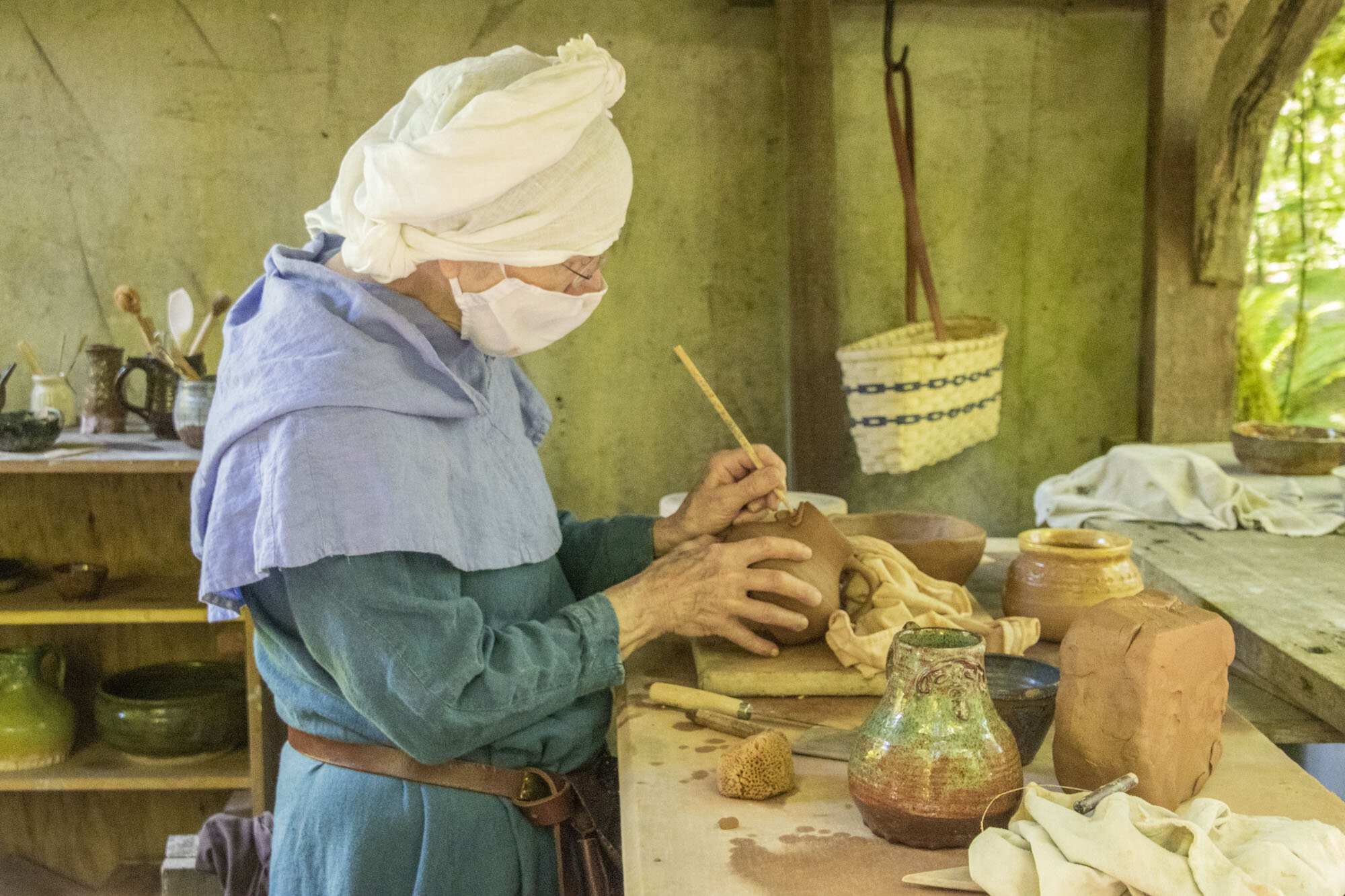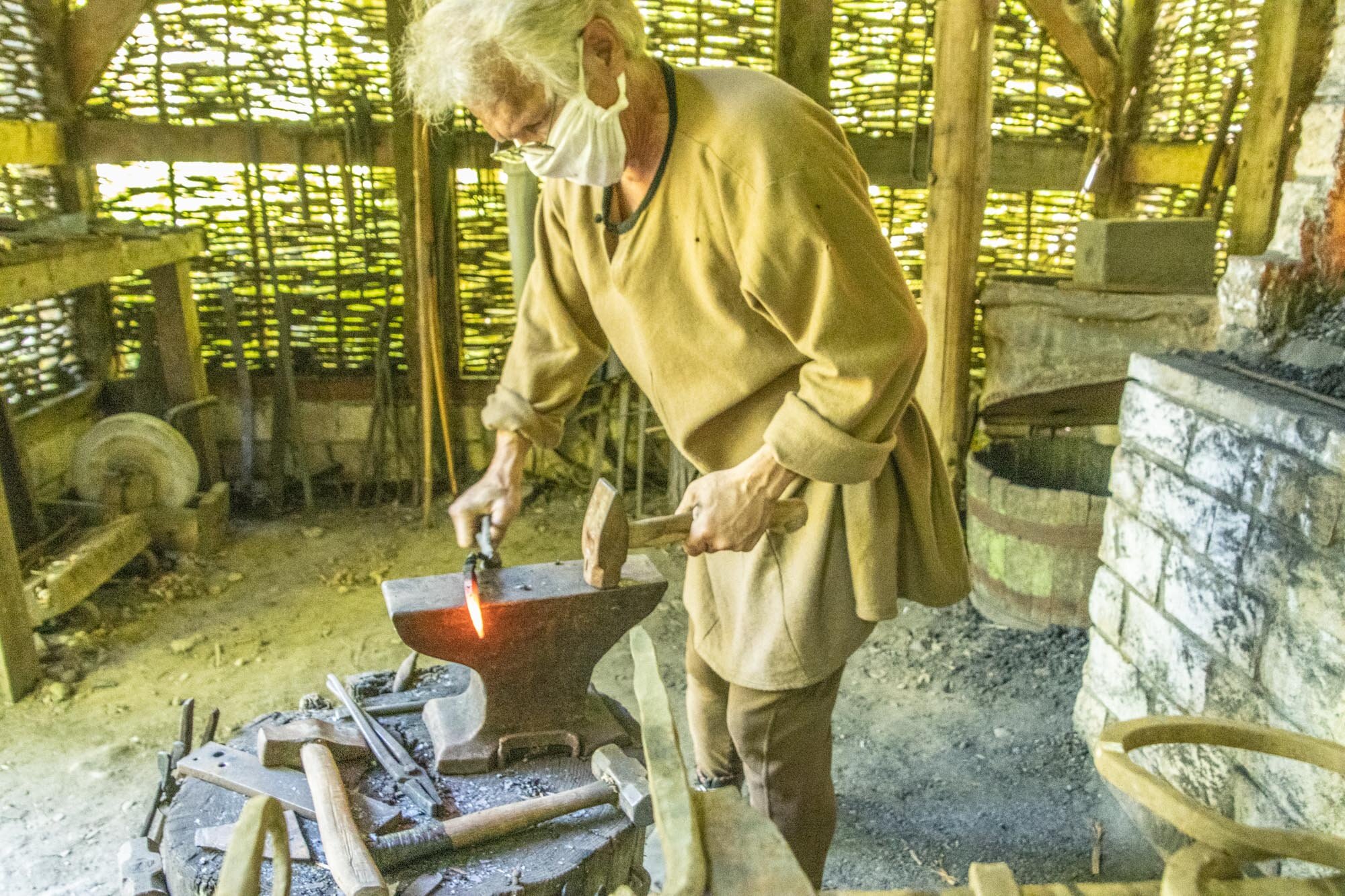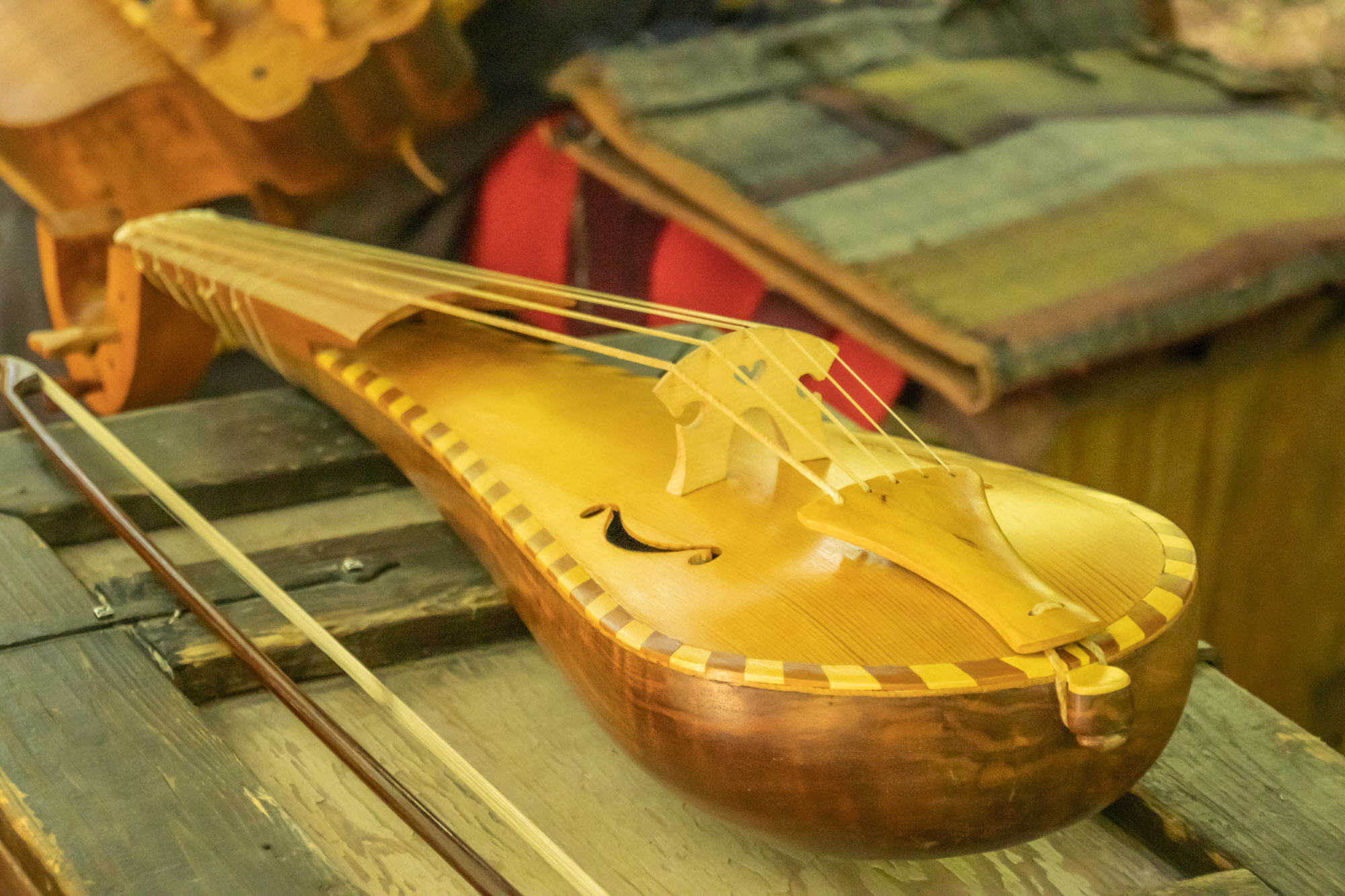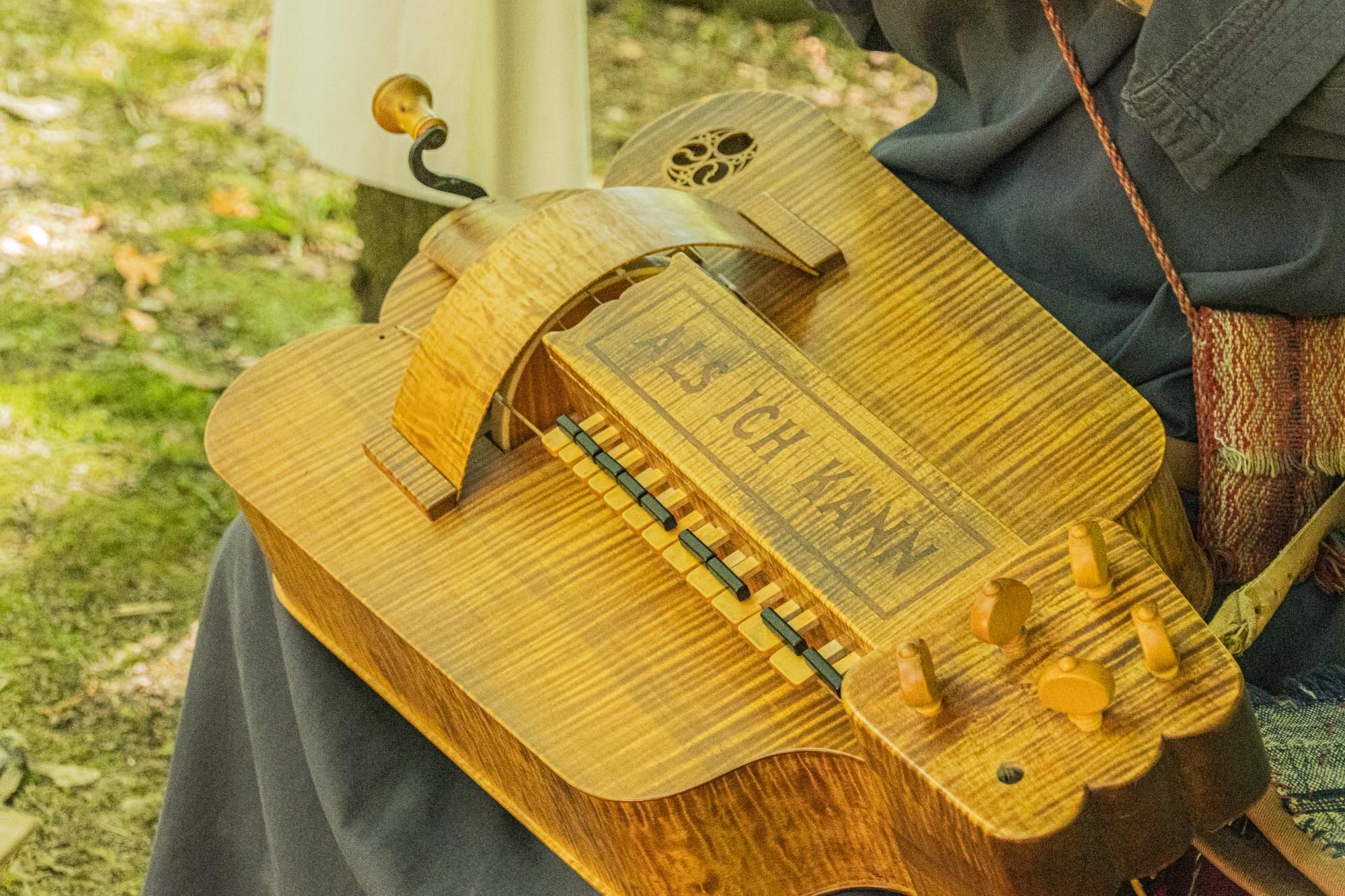Camlann Medieval Village
The Camlann Medieval Village, just outside of Carnation, takes you back to the 14th century in rural England. Their website describes the village as “a living history museum project”. Its intent is to “provide a deeper understanding of the relationship between historical events and western society today”.
I had seen the Village in community calendars for years but now my curiosity got me there. As I planned my excursion, I noticed on their website that there were several important things to consider: The village is only open on weekends, and one of those weekends each month is a special festival with performers and a special 14th century feast. The admission cost is quite reasonable, but they only take cash or checks. Apparently, no credit cards were to be found in the 14th century. No cameras are allowed in the dining rooms which created a challenge for me. I contacted them ahead of time by phone, since there is no public email. Roger returned my call very quickly and generously agreed to allow me to photograph the dining areas when they were not occupied, including the room where the feasts take place.
Once you pay your fare and walk through the entrance, you should fully expect to be in the 14th century. I asked several of the villagers how they became involved, and they claimed to have no idea what I was talking about since they were in the 14th century England and couldn’t understand why I would ask that question. So, as they were living it, I was living it.
The village is built around 2 walking loops, an internal loop from which you access all of the different activities and performance sites, and an external loop which takes you around the outside of the village. My first stop was a visit with Eleanor at her home. Inside was a bed and other necessities for the time. She was also raising a garden of herbs and other foods to feed the village. She gave me a lovely tour of the garden.
While I was with Catherine, Leticia came by, spinning her wool by hand. Although there were spinning wheels in Europe beginning in the 13th century, there were none in this village at the time. Leticia’s craft was easy to take along with her throughout the village so she could spin and visit with her country people at the same time..
Among other artists are Katherine, the potter, Eva, a lister (a wool and fabric dyer), and Vincente, a blacksmith. Their workspaces and the work they did were very realistic. The day I visited was very warm and I give credit to all of them for doing this manual labor in a small space with curious people crowding around them.
Performances and demonstrations are scheduled throughout the afternoon. Using English longbows, three archers, Eva the lister, Katherine the potter and Vincente the blacksmith, shot their arrows into a pile of hay bales with a small wreath as the target. I don’t think there was a contest because there was no scorekeeping, but as far as I could tell the archers were equally as skilled and entertaining with their bows.
Following the main archery display, Vincente gave a detailed explanation about the English longbow, typically made of yew. The bow is curved with a length of 5-6 feet ,giving the user enough draw to bring their hand back to their face or chest when used for hunting or in warfare. The longbow was the dominant weapon from about 1250-1450, after which it started to lose its effectiveness when the English didn’t have time to set up their defensive positions in subsequent battles.
Both the magician, Master Payne, and the musician, the Man in the Moon, were very entertaining and drew large crowds, many of whom had rented costumes and were dressed for the period. The instruments played by the musician included a rebec, which is a stringed instrument played with a bow, similar to a violin. The hurdy-gurdy is a mechanical string instrument that produces sound by a hand-crank turning a rosined wheel that rubs against the strings. The wheel functions similarly to a violin bow, and keys, like on a piano, are pressed to change the notes.
With continued limits on the number of people that could be in the dining room at any one time, the restaurant , Bors Hede, was entirely booked up for both lunch and the festival dinner feast. The lunches, served in the main dining room, consist of English cheeses, fruit, meat or vegetable pottage (soup or stew), and trencher. Trencher is a flat, round bread that is used as a type of tableware on which the food is placed.. At the end of the meal, the bread is either eaten or given as alms to the poor. Both lunch and festival dinners are served on a trencher.
The evening feast, served on festival weekends, is more elaborate. Starting with a trumpet introduction, the entertainment includes songs and stories by the village mistrals. From the Village website, the June feast included all of the following.
From Camlann’s website, here is the menu from the June Festival feast:
Cours i
TRENCHER BREAD (to eat & to eat upon)
A SOMER SALAT (herbs, greens & flowers)
JOWTES OF ALMOND MILK (sweet almond worts)
MYLATES OF PORK (a pork & cheese tart)
STEKYS OF BEF (cinnamon-pepper steaks)
APULMUS (apple & almond milk pudding )
TABLE WINE - MUSTE (spiced juice)
Cours ii
AQUAPATYS (boiled cloves of garlic)
EOWTES OF FLESSH (potherbs cooked in broth)
BLAUNCH PORRE (sweet leeks & chicken)
CORMARYE (roast pork in coriander sauce)
STRAWBERYE (a berry and almond pudding)
TABLE WINE - MUSTE
I was sorry not to be able to partake in or photograph this banquet, but it sounds very fun.
There are no Middle English equivalents to “Bon Appetit” or “Till the Next Time”, so I leave you with “Good Appetit and Cheerio”.














